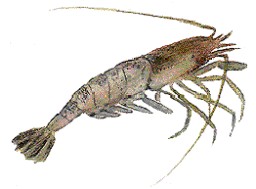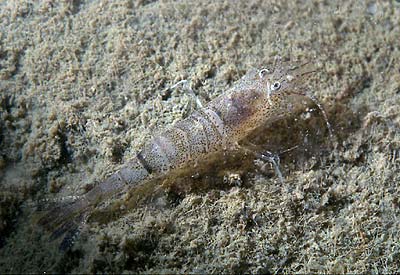|
Noordzeegarnaal, Grijze Garnaal
(Crangon Crangon)
 |
The
North Sea shrimp belongs to the family of Crangonidae,
or sand shrimps. This family of rather small, relatively
dark shrimps occurs in cold and moderate regions, mainly
in the northern hemisphere. All across the globe there
are about 1,950 different shrimp families, 300 of which
are used for consumption. |
The
North Sea shrimp is intensively caught in Northwest Europe.
With an annual supply of 25 up to 35,000 tonnes, the North Sea
shrimp is one of the ten most commercially important shrimp
species. The average length of the North Sea shrimp is 5 to
7 centimetres; it has a transparent body and a dun colour. The
shrimp can reach an age of three years.
| The
North Sea shrimp not only differs in colour and size from
the other species offered in the fish shops. The taste
of the 'pink' shrimps imported from abroad is less pronounced.
The small size of the North Sea shrimp makes peeling difficult.
The intensive peeling process naturally influences the
price. |
 |
The North Sea shrimp is mainly found on sand and sand mud bottoms
in shallow coastal waters: in the summer close to the coast,
where the sun has warmed up the water; in the winter months
further in the sea, in areas that have not yet cooled off. During
the day the shrimp buries itself in the sand, so that only the
eyes and antennae stick out. At night it takes on a darker colour
and sets off in search of food (algae, snails and all kinds
of vegetable food). Shrimps are caught during the entire year,
with clear peaks in April/May and in the autumn months.
|


